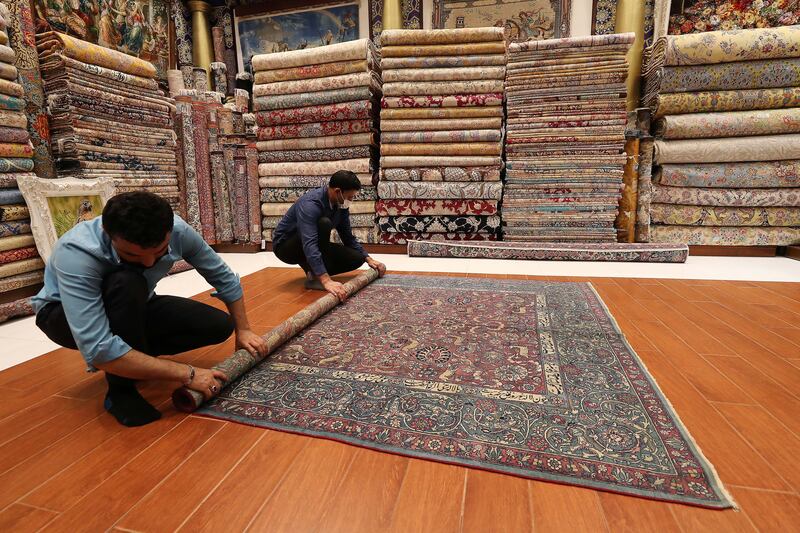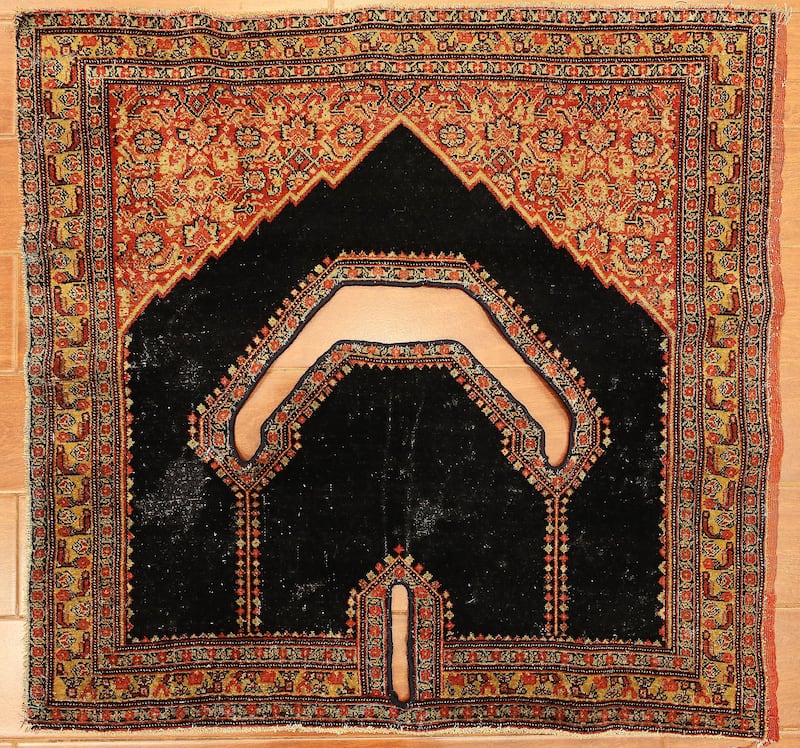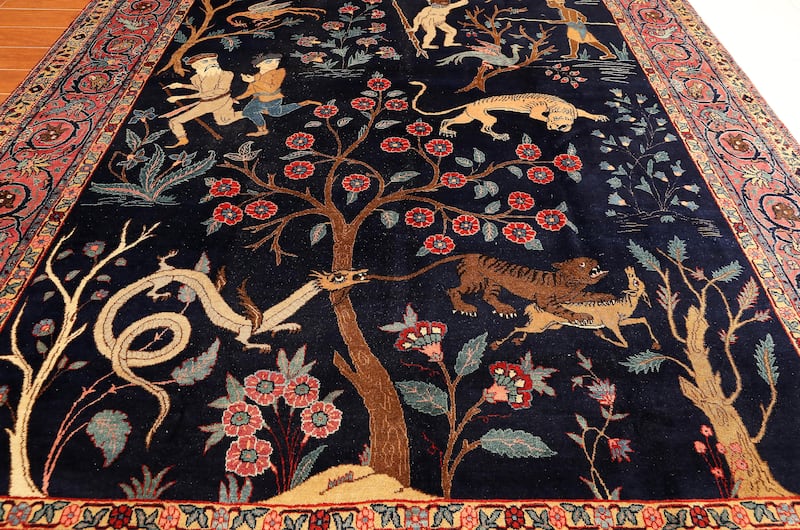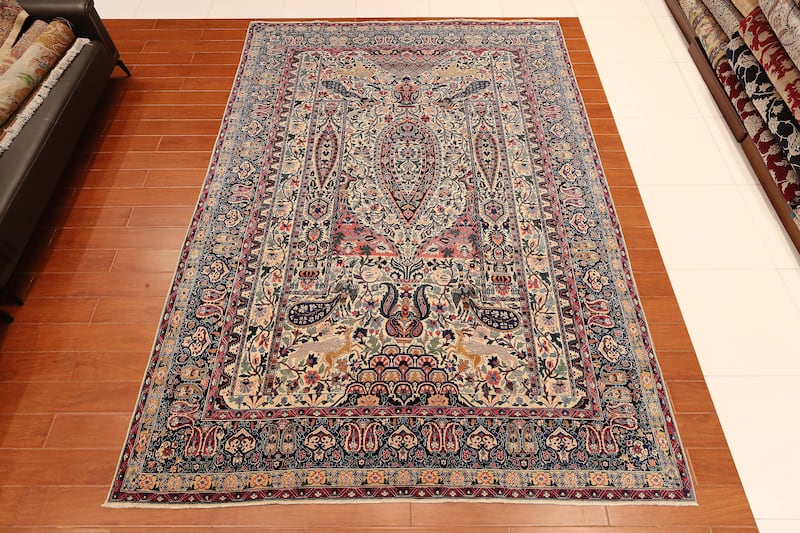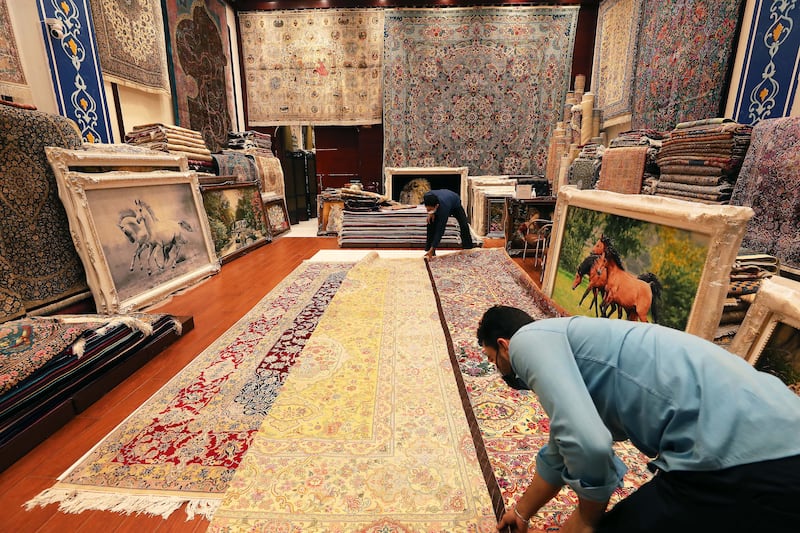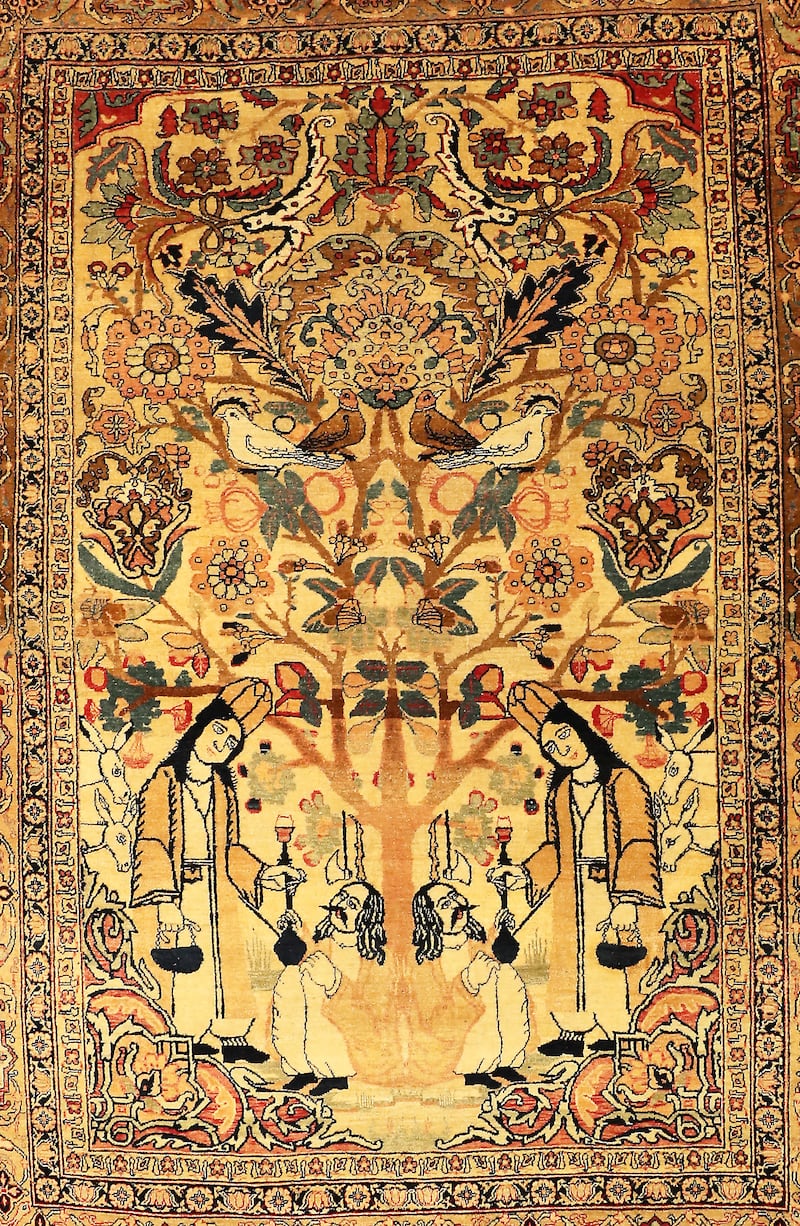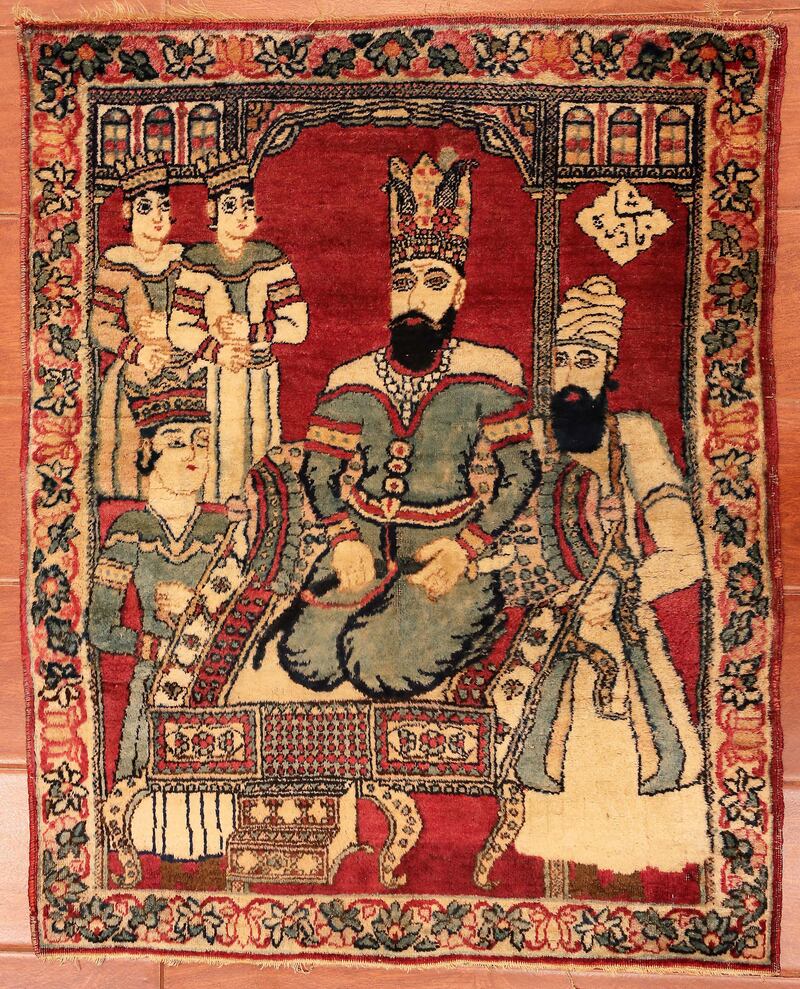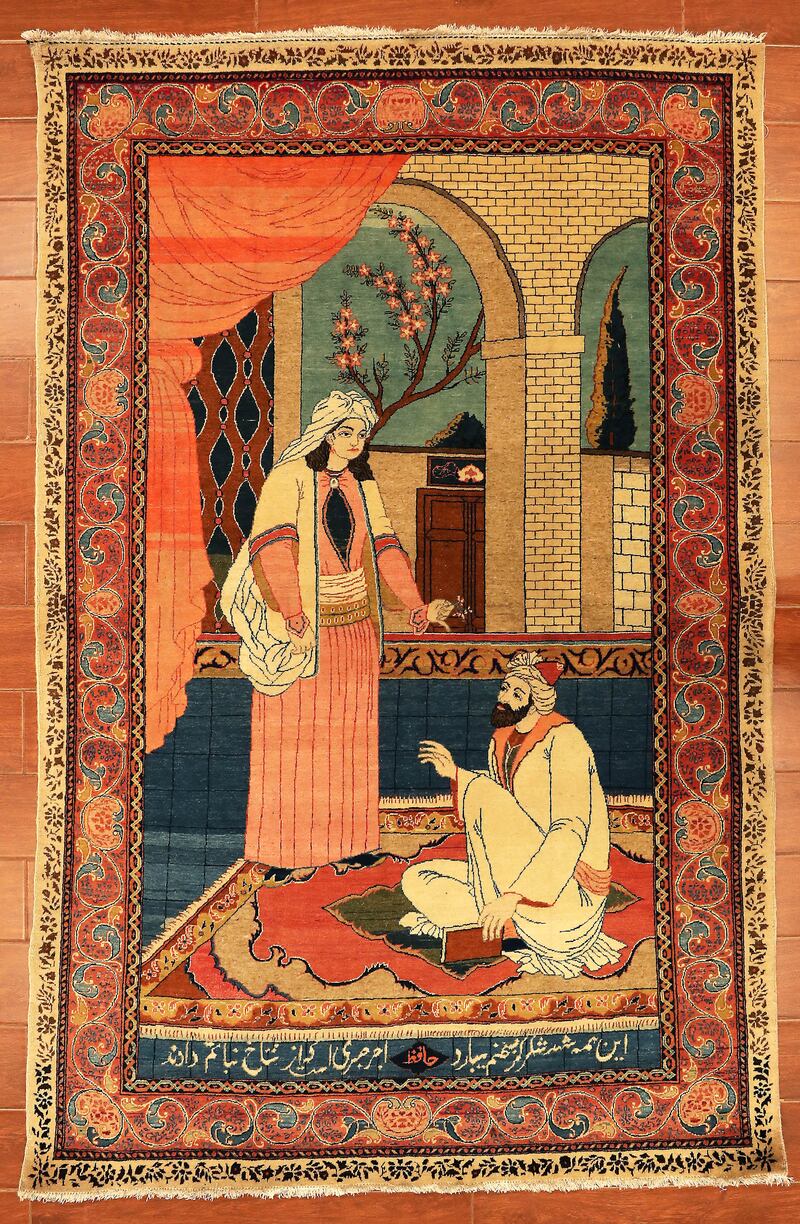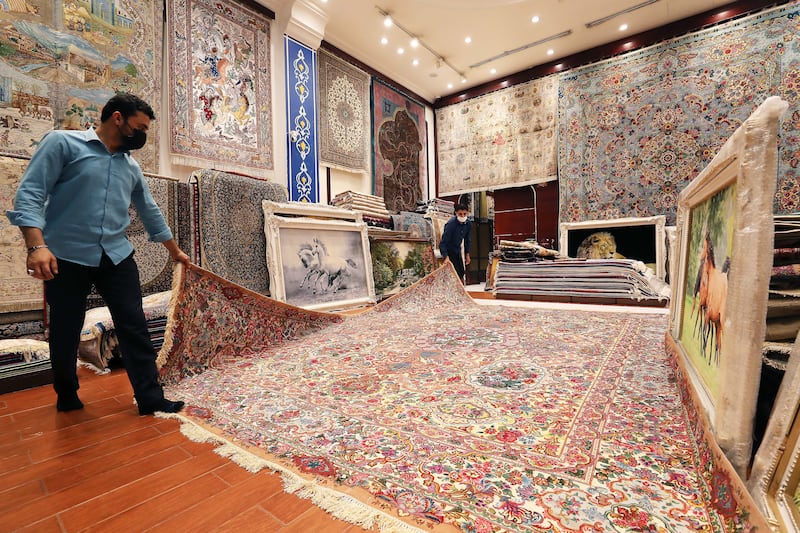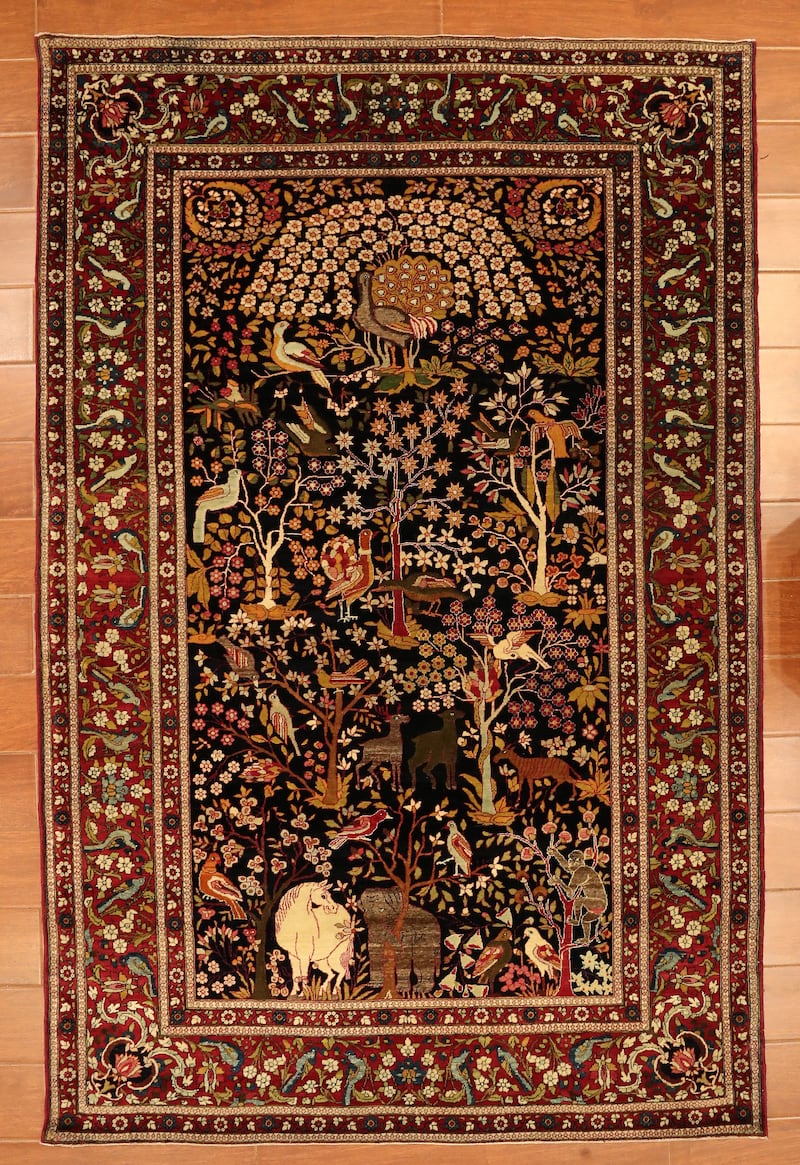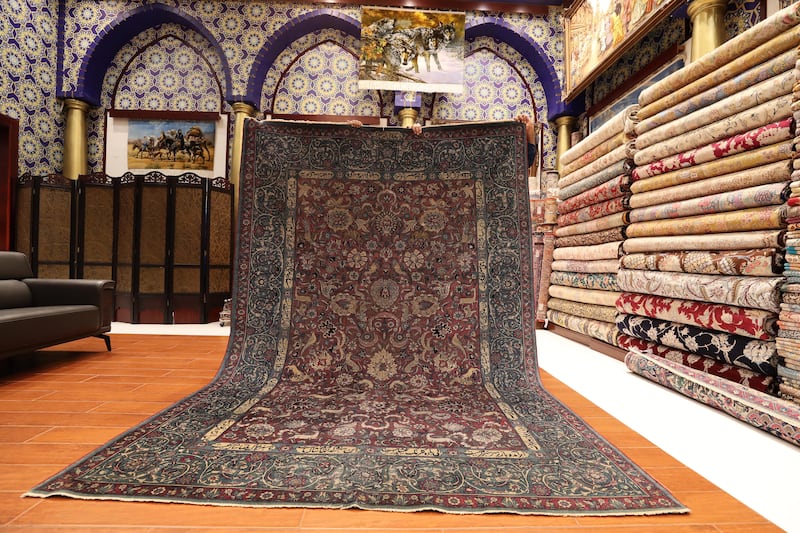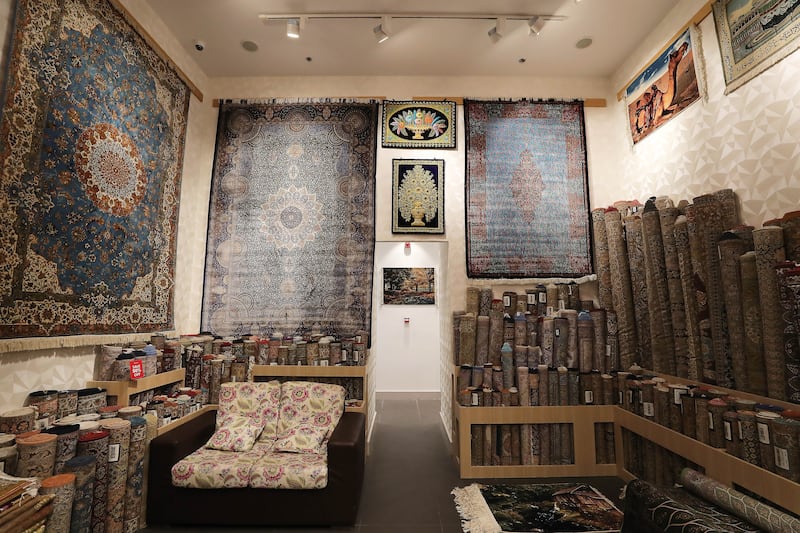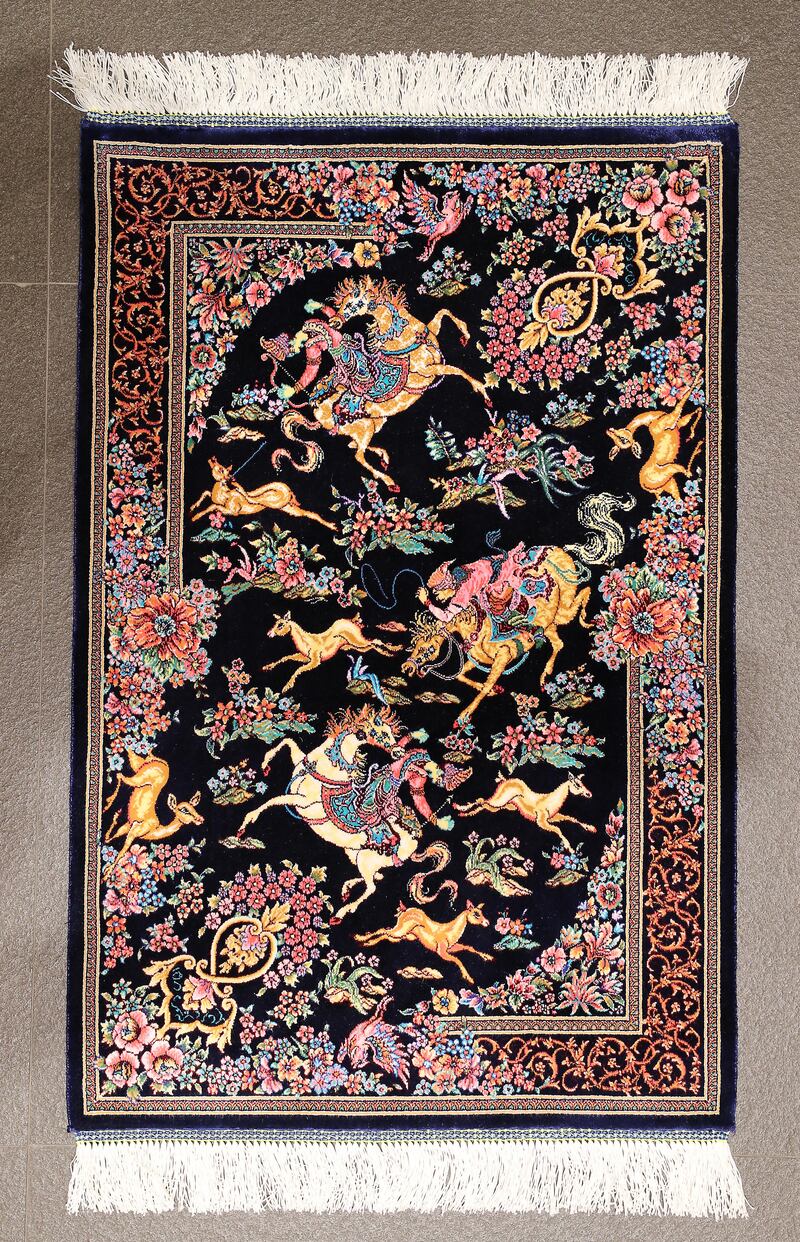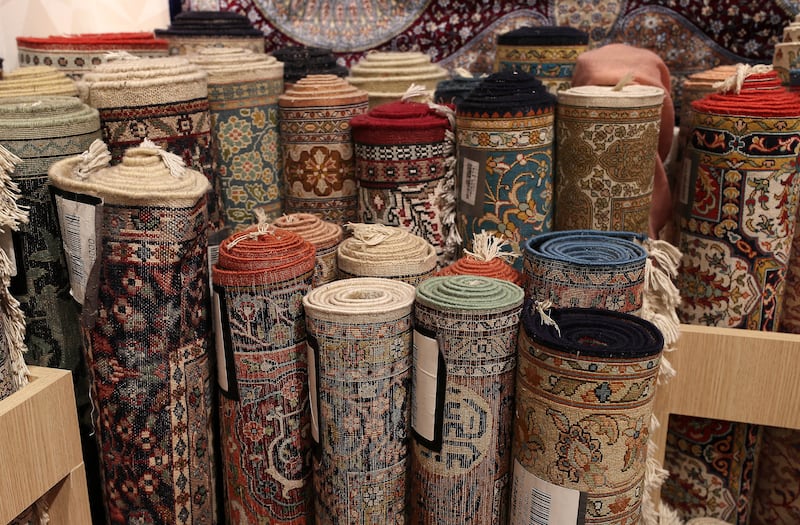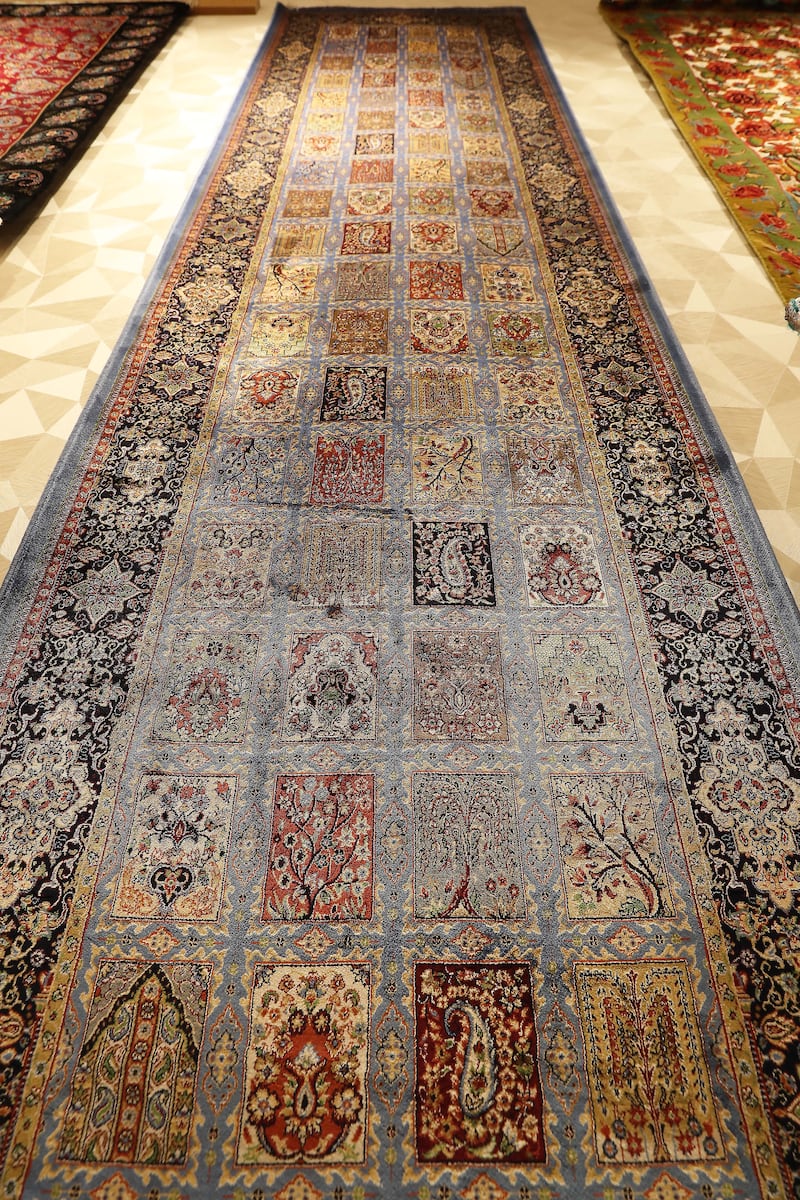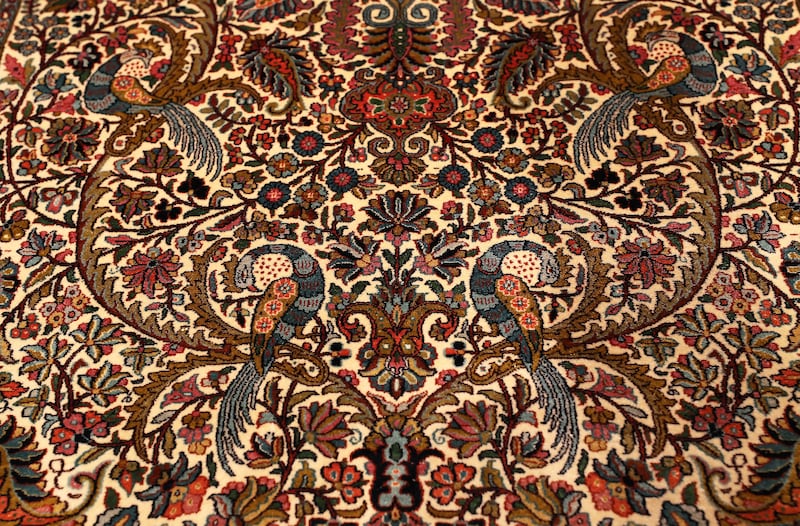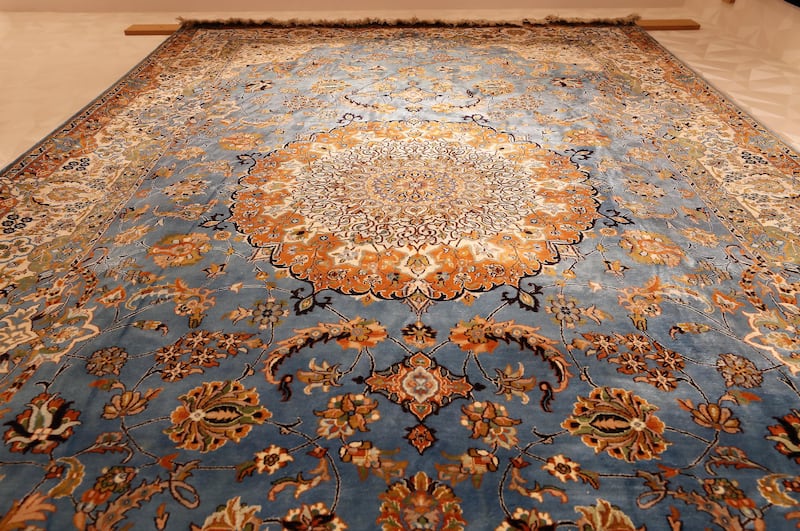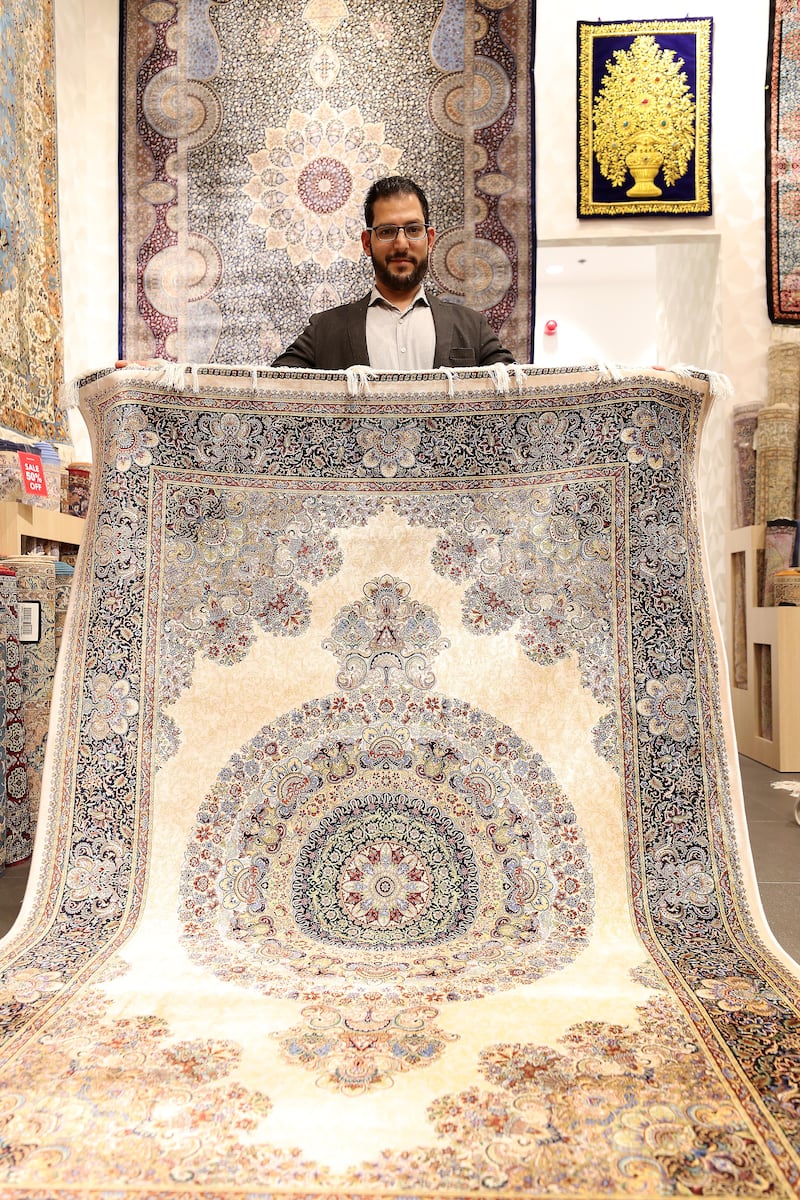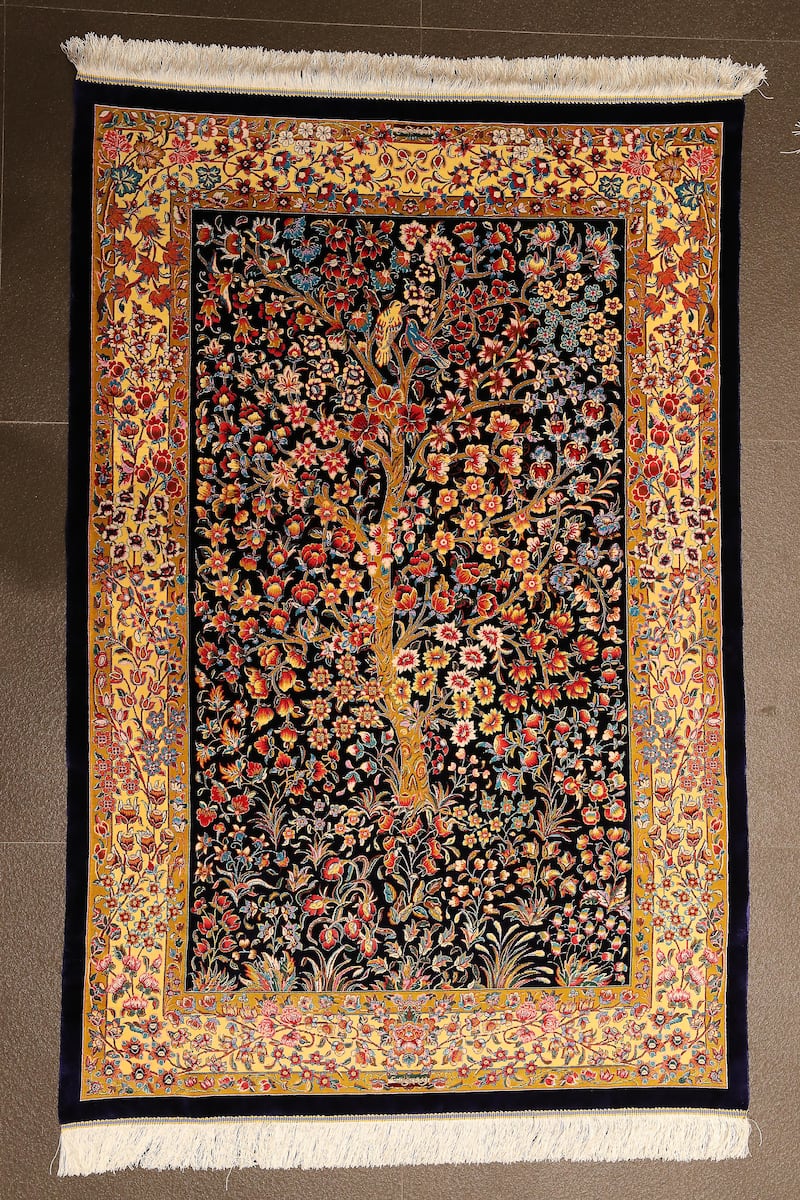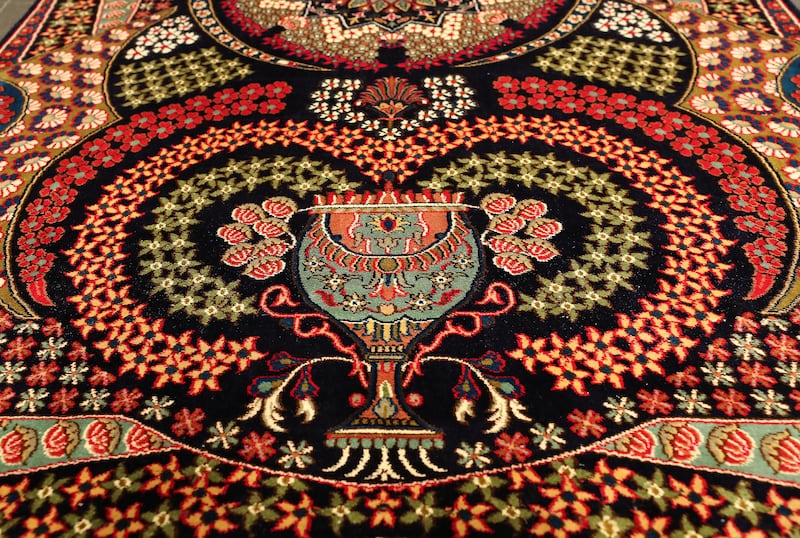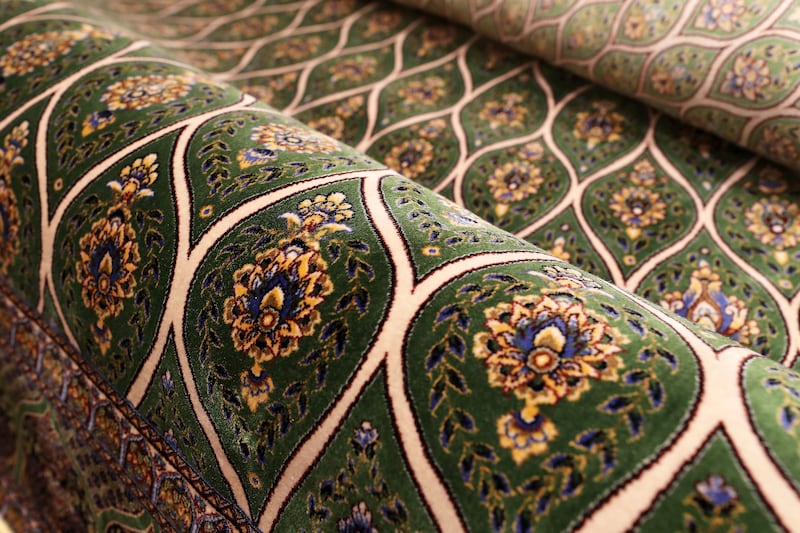In Dubai's glitzy shopping malls, among the latest designer trends and coolest gadgets, carpet sellers vie for customers' attention. The family-run Heritage Carpet traces its history back five generations to Persia, now Iran, and claims to have one of the world’s largest collection of high-end, handmade carpets.
At its Dubai Mall store, one of 18 showrooms in the UAE, Heritage Carpet's range of products includes carpets and rugs priced anywhere between a few hundred and millions of dollars. You can also find rare pieces, some of them up to 150 years old. A horse saddle blanket, believed to be from the 18th century, for example, is worth $200,000.
“We don't usually display the antiques, but [we] bring them out for collectors and special customers,” managing director Amir Ghanbarinia tells The National. “They are kept in a vault, which is temperature and humidity-controlled to preserve them.
“Safety is also an issue, but thank God we live in one of the safest countries in the world.”
Ghanbarinia's family started selling carpets in 1841, and opened their first shop in Dubai 40 years ago. Today, Heritage Carpet has outlets in 29 countries, with 72 showrooms and affiliated boutiques.
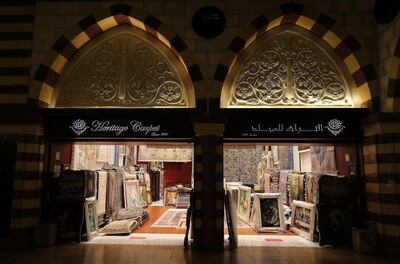
The Dubai Mall shop is full of rare, and expensive, finds. A handmade antique Royal Medallion Persian carpet, for example, pictured below, believed to be from the late 17th century or early 18th century and with pistachio green border, has a price tag of $2.5 million.
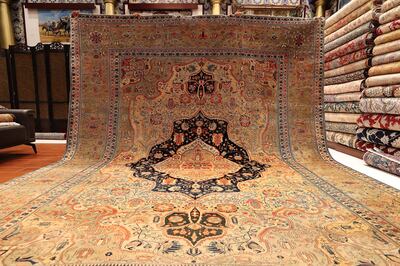
Another high-end piece, a pictorial carpet, pictured below, based on the 7th-century love story of Layla and Majnun is priced at $380,000. The handmade Persian carpet is believed to be more than 150 years old.
Ghanbarinia says the UAE's royal families are one of their biggest customers, and is grateful for their continued support.
“It is only with their support that we have been able to thrive and expand,” he says.

Within their intricate details, the carpets tell different stories, replicating scenes from a bygone era.
A Persian wool and silk handmade carpet, displaying a multifaceted hunting scene, and believed to be 90 years old, is covered in non-repeating motifs. The carpet is priced at $250,000.
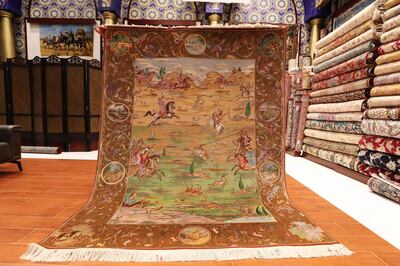
Collector items are not the only products you'll find at Heritage Carpet. Sourced from around the world, but predominantly from Iran, formerly Persia, India and Turkey, carpets and rugs also come in modern and commercial designs.
“We are changing with time. There is a lot of demand for lower priced but beautiful carpets,” Ghanbarinia says, referring to the shop's collection of machine-made products that are still as eye-catching but meant for “one-time use".

“A lot of the younger generation prefer things that are simple and cheap to use. That has its market. The main distinguishing factor between handmade and machine-made carpets is that the value of handmade carpets increases with time. The machine-made ones don’t last so long because many of them are made from synthetic fibres. They lose their value with use.”

At Kani Home in Ibn Battuta mall, Dubai, owner Shahdab Mir's family also come from a long line of carpet sellers in Kashmir, renowned for its cashmere wool as well as its shawls and silk carpets.
Five generations of Mir's family have been in the carpet business with shops spread across India.
In 2004, he opened Kani Home in Ibn Battuta, and has since opened branches at Sheikh Zayed Grand Mosque, World Trade Centre, and the cruise terminal in Abu Dhabi, as well as Al Seef in Dubai.
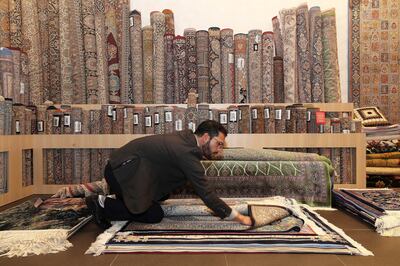
While carpets still provide the bulk of his business, Mir has since expanded Kani Home as a lifestyle shop, selling everything from shawls to clothing and handicrafts.
“Everything comes from Kashmir,” he tells The National.
The most expensive carpets at Kani Home are the hand-knotted ones, some of which can take years to make. Size is also a factor.
A 60cm by 90cm hand-knotted silk-on-silk carpet, decorated with birds, trees and flowers, is priced at Dh55,000. Known as a Kashan carpet after the historical city in Iran known for its silk and textiles, the carpet took a year to make.
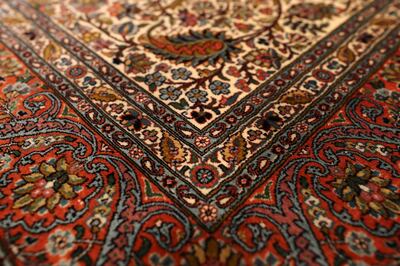
Before he opened the first Kani Home store in Dubai in 2004, Mir says he used to visit as a tourist and found a gap in the market. “There were not many stores that sold products that were a fusion of traditional and modern. And we came in to fill that space,” he says.
But technology has also helped to bring the costs of carpets down and made them more accessible, with semi-handmade carpets now flooding the market, many of them featuring the same traditional designs and motifs.
A machine-made silk Tree of Life-design carpet costs Dh4,980. A handmade version would have a much higher cost and take longer to make.
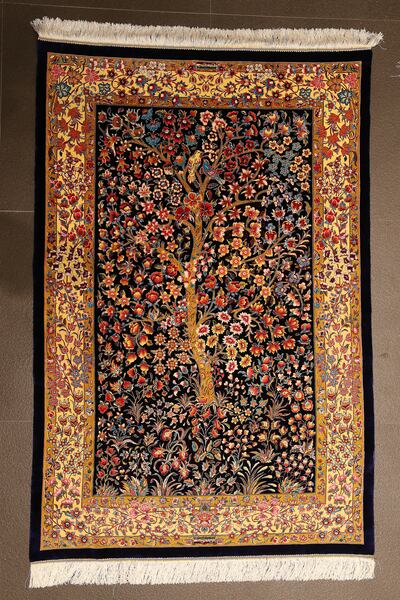
“A small 60cm by 90cm semi-handmade rug will go for about Dh800. The same size if hand-knotted will go up to Dh50,000,” Mir says.
“Before, machinemade carpets were not so intricate but technology has evolved and now we have similar-looking carpets that are semi handmade but much more affordable. Beautiful carpets were once only for people who had the money to spend. Now it’s for everybody.”
